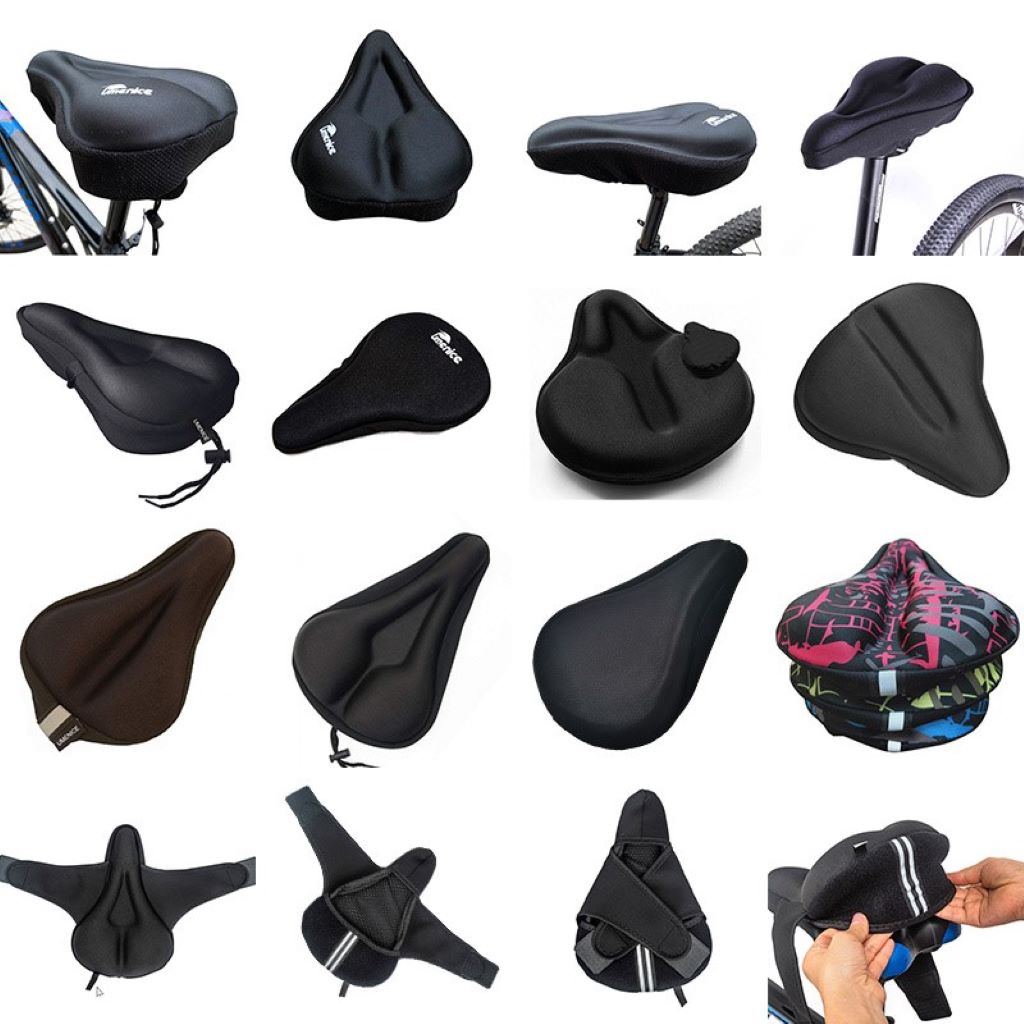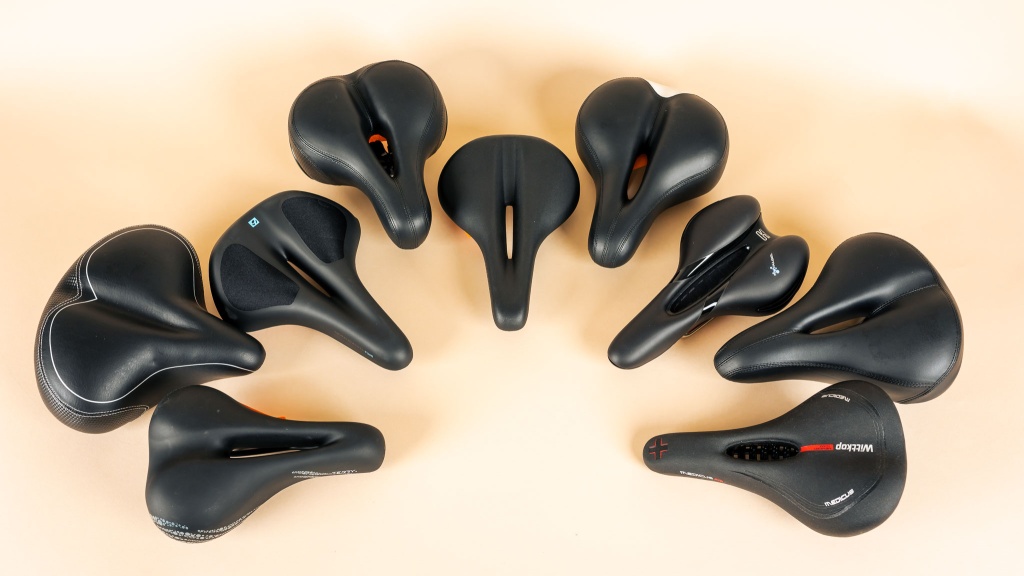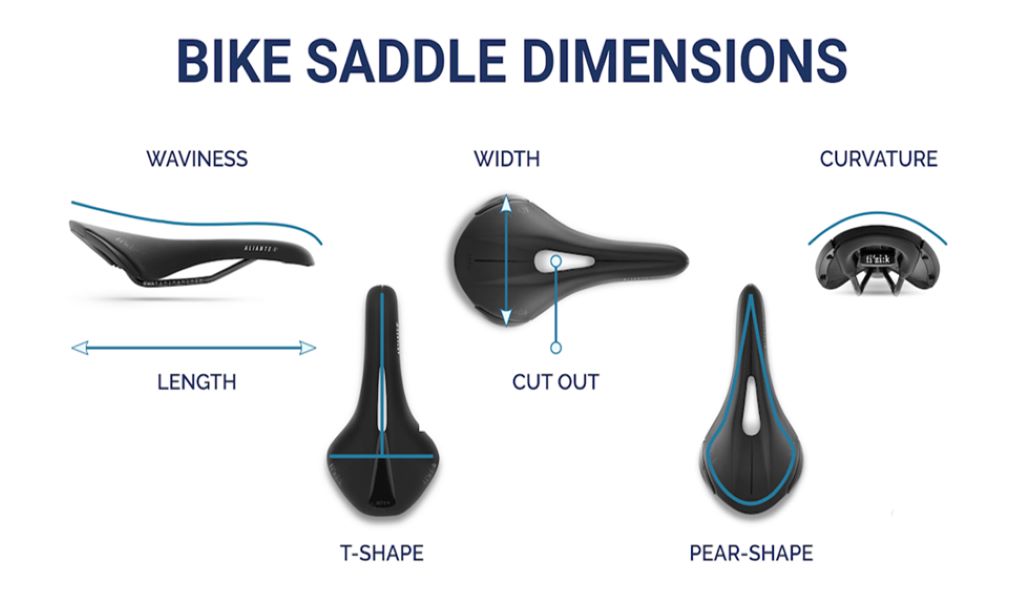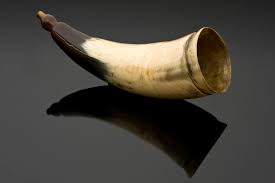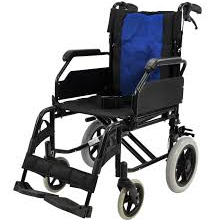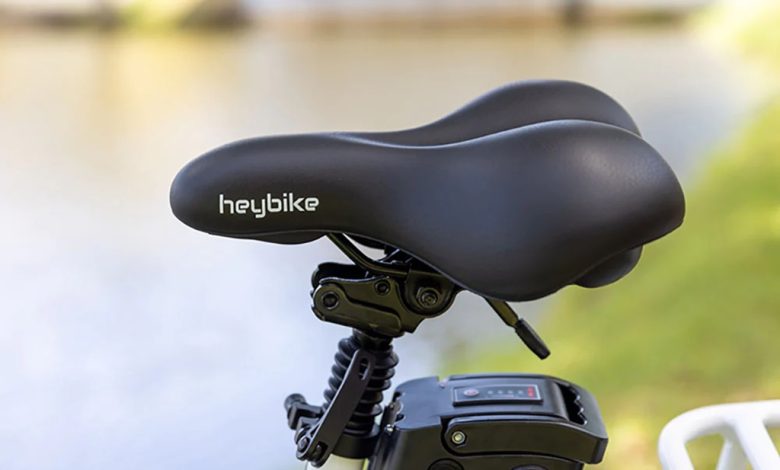
Choosing the right bike seat can significantly improve your cycling comfort and experience. The wrong bike seat can cause pain and discomfort, while the right one allows you to ride for hours without discomfort. Follow this guide to learn how to choose a bike seat for maximum comfort and get the most out of your rides.
What to Consider When Choosing a Bike Seat
There are several factors to take into account when selecting a bike seat:
Your Riding Style
Your riding style and the type of bike you have play a significant role in choosing a seat. Racers and road cyclists need narrower seats for efficiency and aerodynamics. Mountain bikers need wider, more cushioned saddles to handle rough terrain. Cruisers and commuters do better with more expansive, cushioned, upright riding seats. Think about the riding you do most and choose a seat suited for that purpose.
Seat Width
Seat width is an essential consideration for comfort. Narrower seats are more aerodynamic, while wider seats provide more support. Road cyclists typically opt for narrower saddles around 130-140mm wide. Mountain bikers, commuters, and recreational riders do better with mid-width saddles around 150-170mm for extra support and comfort over bumps. Different wide saddles over 180mm provide maximum comfort for upright recreational riding.
Seat Shape
The shape and contour of the seat impact comfort as well. Performance saddles are long and narrow with minimal padding. Recreational saddles are shorter and broader, with more cushioning. Some have channels or cutouts down the center to relieve pressure on delicate areas for all-day comfort. Choose a shape suited to your riding style.
Seat Padding
Padding is essential for providing comfort on longer rides. Minimal padding is usually found on performance saddles since excess cushioning can cause chafing. Recreational saddles have thicker padding using different types of foam and gel. Test saddles with various thicknesses of padding to find your optimum comfort level.
Seat Material
Bike seat materials differ in durability, weather resistance, and flexibility. Performance saddles often use carbon fiber bases, which are very lightweight but less durable. Recreational saddles usually opt for plastic bases, which are affordable and weather-resistant. Leather or synthetic leather covers are standard. Gel covers prevent sliding and minimize pressure points. Try saddles with different material combinations.
Suspension
Some saddles are equipped with suspension, which helps cushion bumps and vibrations. This isn’t common on performance saddles, but many mountain bike and recreational saddles incorporate suspension technology. Rear suspensions under the saddle can improve comfort over rough terrain.
Rails
Rails connect the saddle to the seat post. Materials like steel, titanium, carbon fiber, and aluminum allow the seat to flex and absorb shock. Steel is very durable but heavier. Carbon fiber allows more flex but is less stable. Titanium offers a lightweight, flexible, and durable option. Consider rail material along with your budget.
By evaluating these factors, including your riding style, needs, and preferences, you can narrow down the saddle options to find your perfect seat. Whether you’re an avid cyclist or a casual rider, the right bike seat with backrest and armrest can significantly improve your comfort and overall riding experience. Consider factors such as saddle width, padding thickness, and material to ensure that your chosen seat provides the necessary support.
Additionally, including a backrest and armrest can offer extra stability and comfort during longer rides. Keep these aspects in mind as you explore the diverse range of bike seats available, allowing you to make an informed decision that enhances your comfort and enjoyment on the road.
Bike Seat Styles To Choose From
There are several common bike seat styles, each with pros and cons:
Performance Road Bike Saddles
- Narrow and long shape
- Minimal padding
- Lightweight with stiff composite or carbon base
- Aerodynamic for speed
- Less comfort and shock absorption
Mountain Bike Saddles
- Wider and moderately padded
- Durable plastic or composite base
- Rear suspension aids comfort
- Suited for upright riding
- Provides cushioning for bumps
Bike Commuter Saddles
- Broader shape with more cushioning
- Durable synthetic or leather cover
- Suspension provides comfort over long distances
- Adjustable rails and angle
- Reflective elements for visibility
Cruiser Bike Saddles
- Wide, softly padded saddle
- Durable synthetic cover
- Upright comfort for casual riding
- Thick padding for shorter rides
- Limited compatibility with some bikes
Gel Bike Seats
- Gel padding absorbs shock and vibration
- Cutouts relieve pressure
- Versatile for road, mountain, and commuting
- Padded lycra or leather cover
- Not the most durable option
Consider different saddles’ design elements and intended uses to choose what fits your cycling style and needs.
How to Measure Sit Bone Width
Your sit bone width is an important measurement to get before selecting a bike seat. When seated, this is the distance between the bony prominences (sit bones) felt beneath your pelvic muscles.
Measuring your sit bone width helps determine the ideal saddle width for comfort and support. Here’s how to measure:
- Use a cardboard sheet or corrugated box. Cut out a rectangular piece at least 18 inches long.
- Sit on the cardboard so your weight flattens it out. Try to distribute weight evenly across both sit bones.
- Carefully get up and see two indents from your sit bones pressed into the cardboard.
- Measure the center-to-center distance between the indents in millimeters. This is your sit bone width.
- Round your measurement up to the nearest 10mm. This will be your approximate saddle width.
Knowing your sit bone width helps narrow saddles wide enough to provide proper support without being too wide or narrow for optimal comfort.
Bike Seat Angle Adjustment
Adjusting the angle once you’ve selected a saddle can fine-tune the fit. Tilting the nose of the seat up or down impacts how your weight is distributed and alleviates pressure.
Here’s how to find the optimal saddle tilt:
- Start with a level seat, with the nose and rear parallel to the ground.
- Tilt the nose slightly (no more than 3-4 degrees) to shift weight off your arms and hands if they feel too much pressure.
- Tilt the nose down slightly to alleviate perineal pressure if necessary. Don’t angle the nose down too far, which can cause sliding.
- Make adjustments in small increments of about 1 degree. Test for at least 5-10 minutes before readjusting.
- The ideal angle is usually 0-4 degrees up or down from level. This may take some trial and error.
- Be sure your seat post isn’t extended past the minimum insertion mark.
Getting the tilt dialed in will distribute your weight correctly for a comfortable riding position.
How to Select Bike Seat Covers
Many recreational cyclists opt for a seat cover to enhance their comfort on longer rides. Here are tips for selecting a saddle cover:
- Match the cover shape and dimensions to your existing saddle so it fits properly.
- Thicker padding adds cushioning, while thin, flexible covers maintain a lower profile. Test different thicknesses.
- Gel pads and memory foam distribute weight and minimize hot spots.
- Covers with a center cutout to relieve pressure from sensitive areas.
- Look for moisture-wicking and antibacterial materials to stay dry.
- Reflective accents improve visibility and safety.
- Consider longevity – leather will last longer, but synthetic covers offer affordability.
- Look for non-slip undersides to keep the cover from shifting.
- Ensure the cover fits snugly and won’t bunch or rub as you pedal.
Following these tips will lead you to a saddle cover that enhances your existing seat’s comfort and support. Consider still your saddle’s width, shape, and angle for maximum comfort.
Finding the Right Bike Seat – Testing Tips
The best way to choose a saddle is to test-ride different options. Here are some tips for test riding seats:
- Evaluate seats on your actual bike, not a store’s fitting bike. The bike geometry impacts comfort.
- Ask shops if they allow test rides on new saddles. Some will install demo seats for testing.
- Try seats with different materials – carbon, leather, and plastic bases. See what flexes and fits your shape best.
- Compare moderate to heavily padded saddles to see which offers ideal cushioning.
- Test various widths based on your sit bone measurement to gauge the right fit.
- Rate comfort from 1-10 after at least a 10-15 minute ride to compare seats.
- Consider testing a new saddle on a short ride first to detect any hot spots.
- Check that the saddle supports your sit bones evenly when correctly positioned.
- Bring tools to make minor angle adjustments during testing.
Taking the time to test ride saddles properly helps guarantee you select the most comfortable seat for your riding style and body. Don’t settle – a quality bike seat should feel great from the start.
How to Make a Bike Seat More Comfortable
If your current saddle feels less than ideal, some simple tweaks can help improve comfort:
Adjust the Tilt
As mentioned, tilting the nose slightly up or down can alleviate pressure on sensitive areas. Play with the angle in small increments to find the sweet spot.
Stand Up Periodically
Take a break from sitting by standing up on the pedals every 10-15 minutes. This allows blood flow to return to compressed areas.
Use Padded Cycling Shorts
Quality padded bike shorts help reduce vibration and chafing. Look for shammy padding with contours or cutouts to relieve pressure.
Suspension Seat Post
Adding a suspension seat post can help cushion vibrations and bumps that a saddle can’t absorb. These provide extra shock absorption.
Try a Seat Cover
Covers with gel padding, memory foam, or extra cushioning enhance comfort. Ensure it fits your saddle snugly with no bunched edges.
Adjust Handlebar Height
Correctly positioning the handlebars takes the pressure off your seat and onto your arms and core muscles for better distribution.
Lube Your Shorts
Apply chamois cream to the padding to prevent chafing and hot spots, especially for long rides.
With some adjustments and accessories, you can make your current saddle more comfortable without purchasing an entirely new seat. Find the right combination that enables you to ride in complete comfort.
FAQs
How do I know if my bike seat is too narrow?
If your seat is too narrow, you may feel like you don’t have enough support under your seatbones. This can cause discomfort or cause you to feel like you will slide forward off the saddle. Your sit bones should be centered on the widest part of the saddle. If you feel like your seat bones are hanging off the edges, the seat is likely too narrow for optimal comfort and support.
Should my saddle be level or angled up?
Most riders do best with a nearly level saddle angle or tilted up slightly. Completely level is a good starting point. If you feel sliding forward or pressure, tilt the nose up in increments of 1 degree until it feels right, usually no more than 3-4 degrees. Don’t angle sharply, as this places too much pressure on your arms and hands.
How far forward should my seat be?
As a general rule of thumb, your seat should be positioned so your tibia (shin bone) is perpendicular to the pedal at 6 o’clock, just as your leg reaches full extension. This allows for an efficient pedal stroke. You also want your knees centered over the pedals, not too far forward or too far back. Saddle fore-aft positioning depends on the bike frame size and your anatomy.
Can I put a broader seat on my road bike?
You can install a slightly wider seat on a road bike to gain more support. However, going too wide interferes with your pedaling stroke and legs, clearing the saddle efficiently. An extra 10-20mm wider than a traditional road saddle is usually the limit to maintain proper biomechanics. It’s much broader, and you’re better off switching to a more upright fitness bike instead.
How often should I replace my bike seat?
With proper care, a quality bike saddle should last several years. However, with frequent use, the padding will compress over time, and the material may wear out. If your saddle no longer offers cushioning, the cover is cracked/torn, or you’re experiencing discomfort, it’s probably time for a new seat. For regular riders, this usually happens every 2-4 years. Higher-end seats may last longer. Checking your seat periodically helps avoid developing pain from worn padding.
Conclusion
Choosing the right bike seat is one of the most essential comfort factors for an enjoyable riding experience. Take the time to evaluate your riding style, sit bone width, frame size, and preferences to select the ideal saddle. When choosing a bike to fit your body type, it’s crucial to test ride multiple seats and experiment with angles, covers, and tweaks; this way, you can dial in a seat that feels perfect from the start, ensuring your dream saddle allows you to ride comfortably and focus on the journey ahead.

